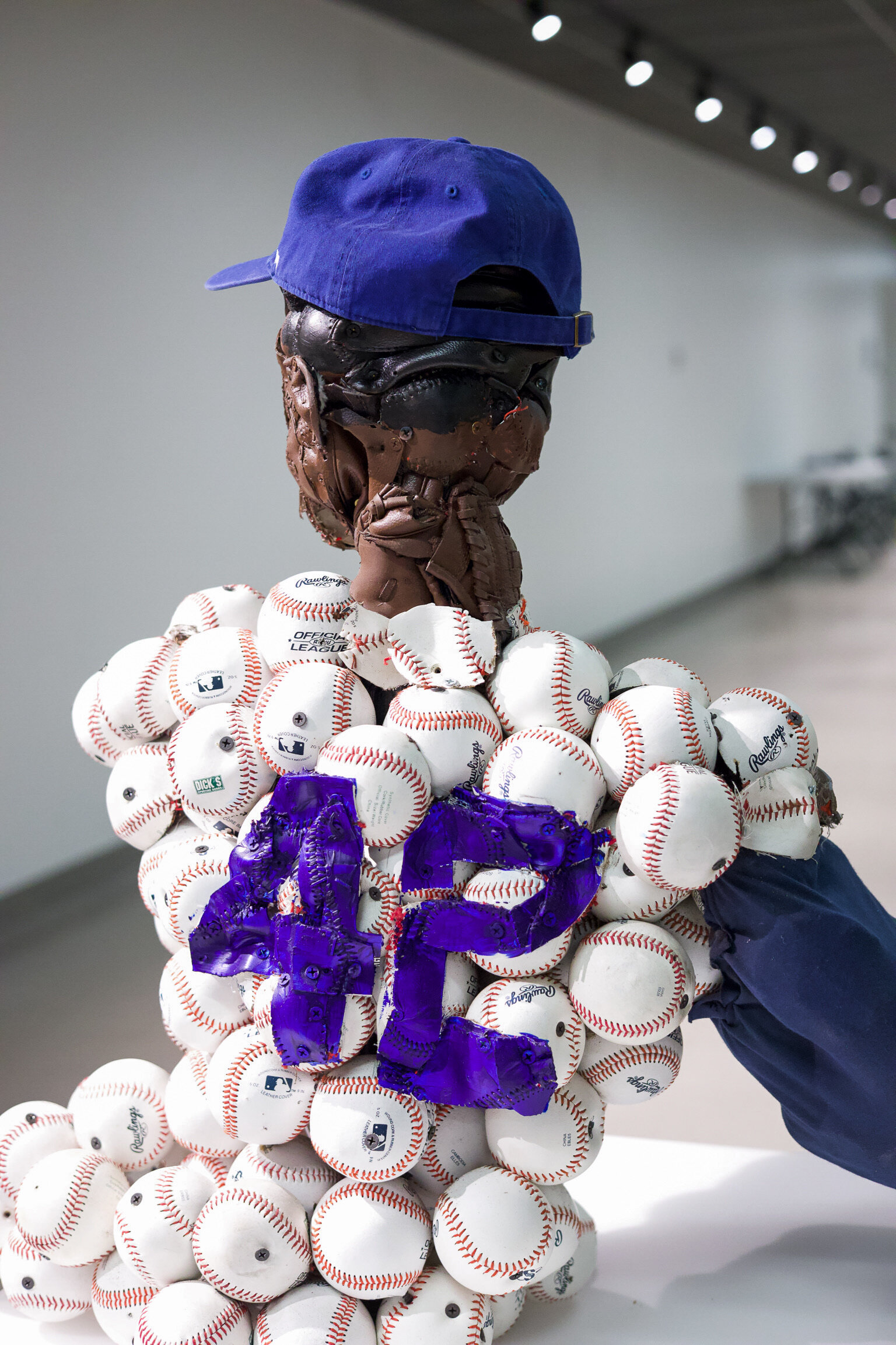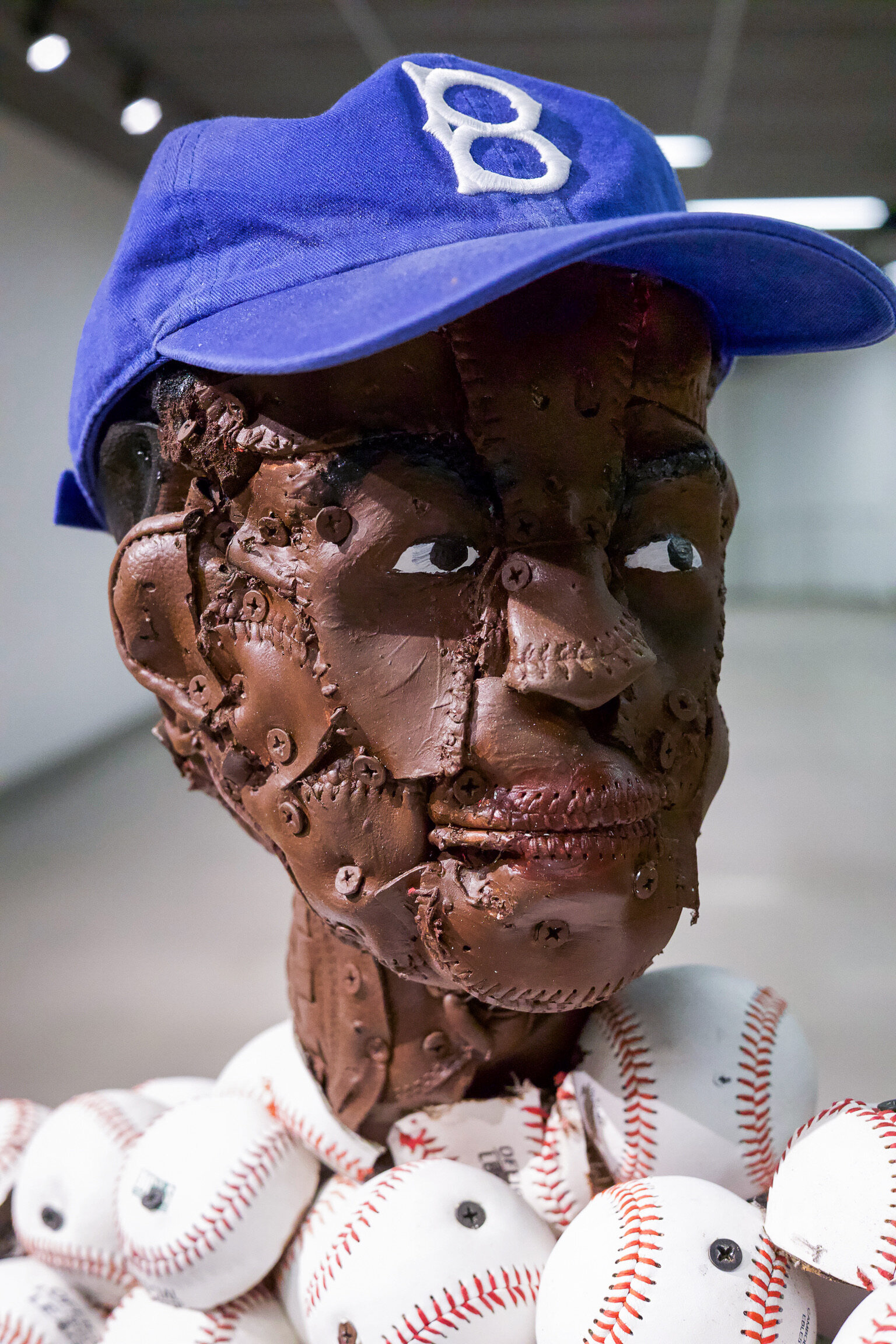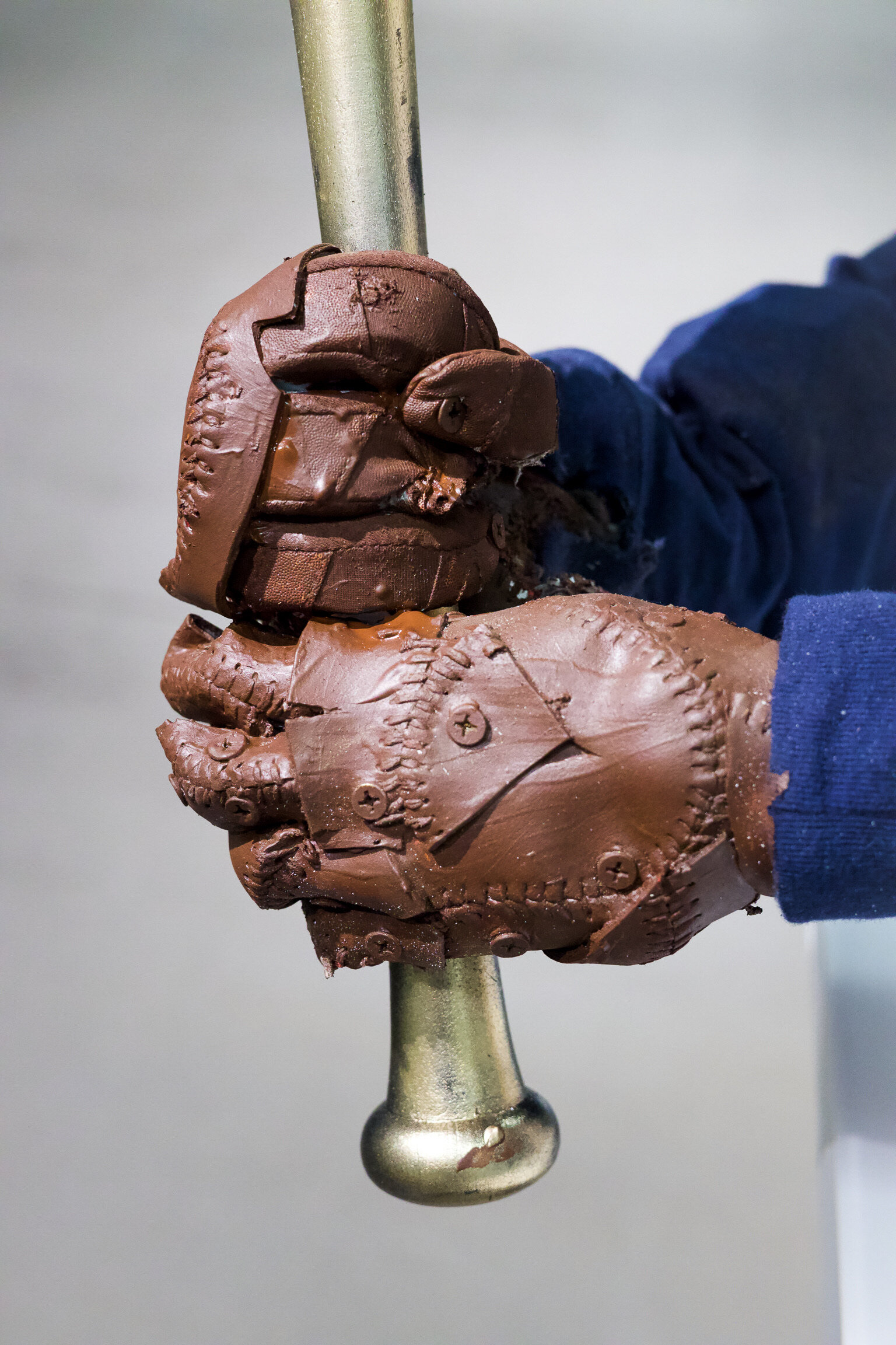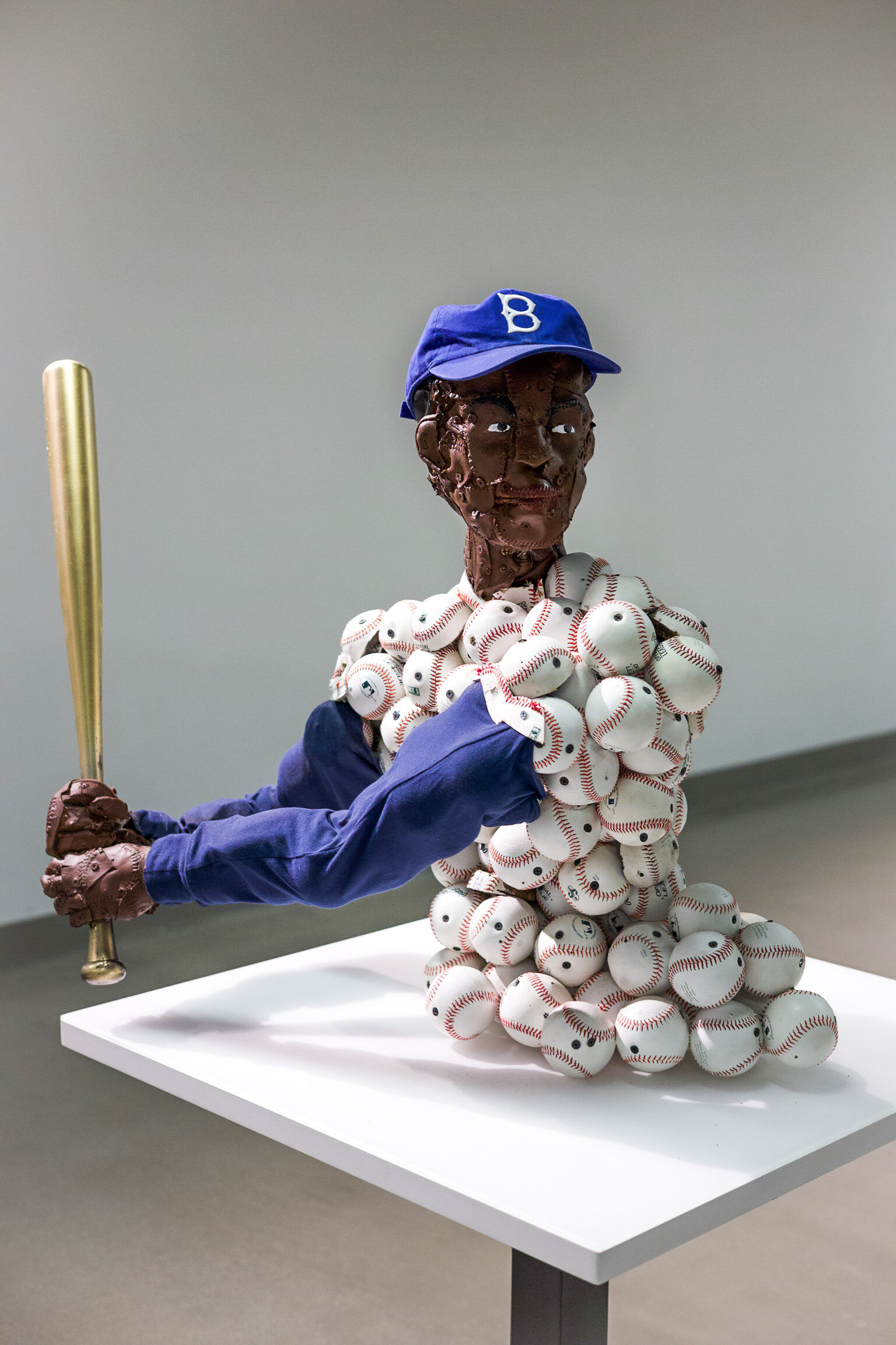
“42”
This sculpture of Jackie Robinson was created out of bats, gloves, and baseballs. The stance and unfazed facial expression represent the way he approached civil rights issues and integrating the sport. Jackie quickly became the target of vicious racial abuse. In his first season with the Brooklyn Dodgers, he described how he played his best baseball as outpours of abuse were thrown upon him, and the country focused its attention on his baseball game. He used the excellence in his game as a primary response to the racial vitriol he received. Robinson's stand was firm and nonnegotiable.
Video Below
Background
Jackie Robinson broke the color barrier in major league baseball when he started at first base for the Brooklyn Dodgers on April 15, 1947. His athletic excellence under pressure effectively led to the integration of the MLB. Furthermore, his decade long career with the Dodgers — and his outspoken activism in his later years — helped set the stage for the up and coming Civil Rights Movement. He spent much of his time raising money for the National Association for the Advancement of Colored People (NAACP) and the Southern Christian Leadership Conference (SCLC). Having established a reputation to resist the urge to strike back, he answered the people he referred to as "haters" with the perfection of a base hit. In 1949, his best year, Robinson was named the league's Most Valuable Player, and in 1962 he was elected to the Baseball Hall of Fame. Every American President in office between 1956 and 1972 has received letters from Jackie Robinson. In these letters, he expressed rebuke for “not going far enough to advance the cause of civil rights”. While not committed to a particular political party, he measured a President's efficiency by his level of dedication to civil rights. “Robinson's stand was firm and nonnegotiable.”










